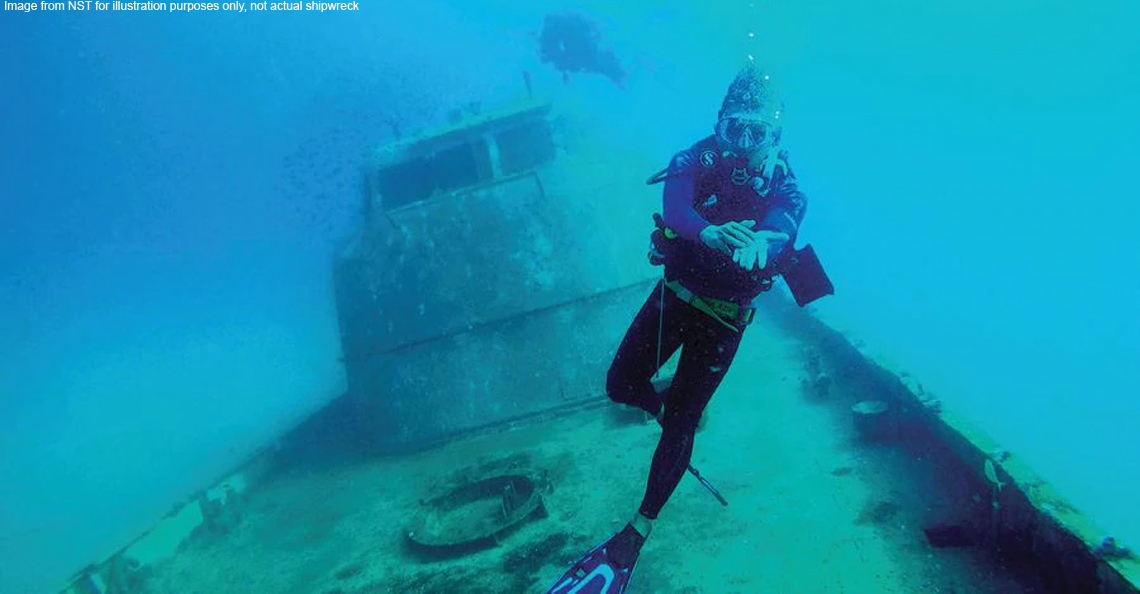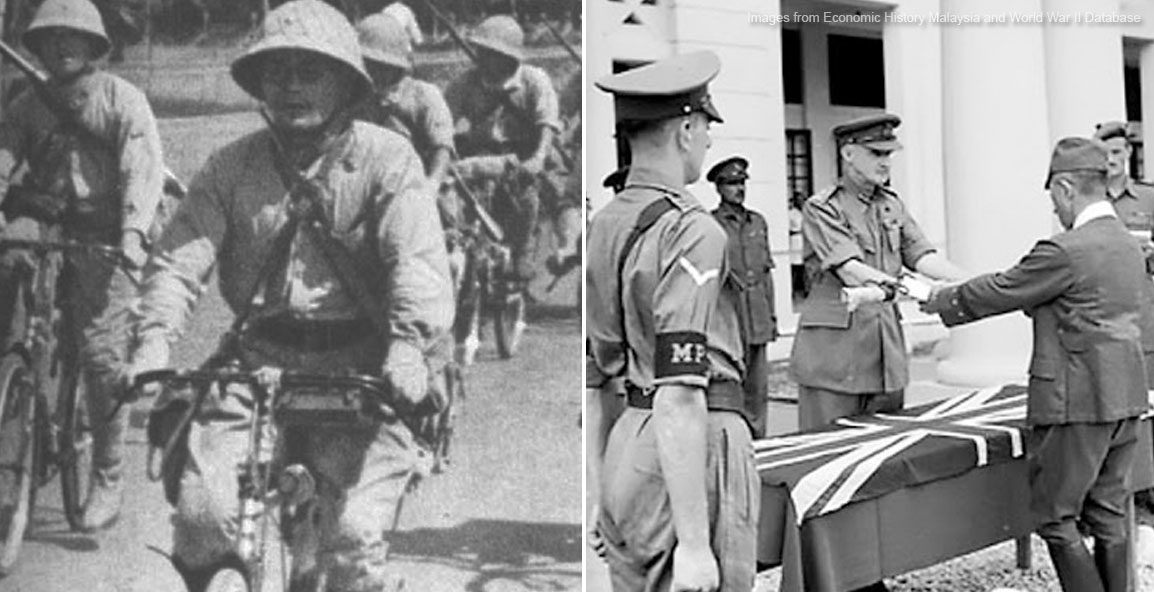The horrifying story behind why Sabah holds memorials for Australian soldiers every year
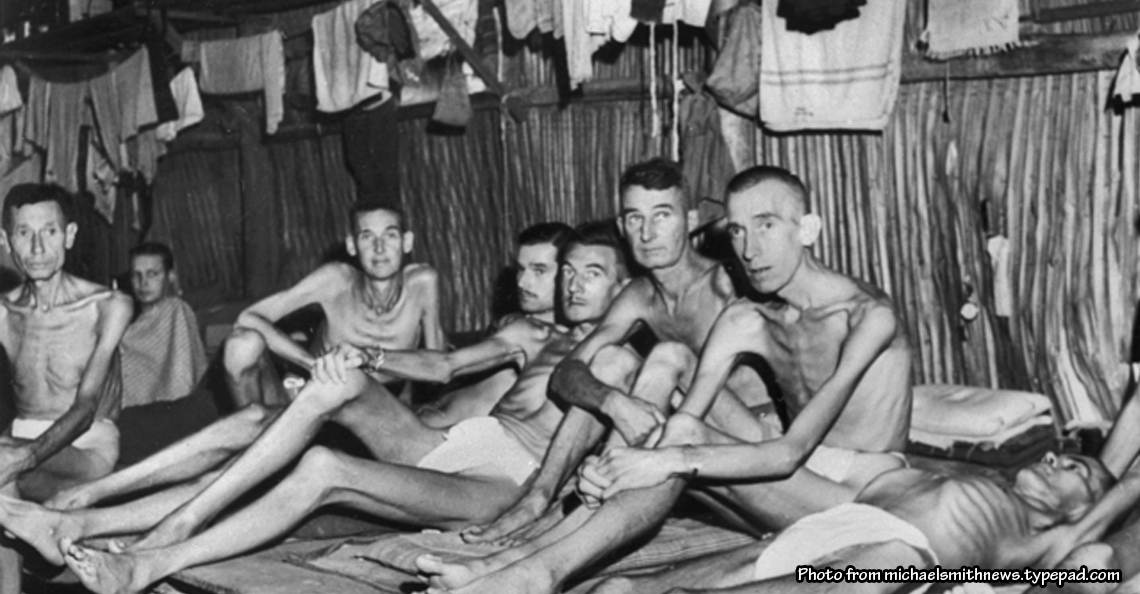
- 38.2KShares
- Facebook37.4K
- Twitter60
- LinkedIn103
- Email178
- WhatsApp426
On the 25th of April each year, a memorial service is held in Sandakan, Sabah. As early as 4 in the morning, mourners gather at the Sandakan Memorial Park, where a large, black stone obelisk looms in the center of a ten-meter circle of cobblestones.
By 5.30 in the morning, the Dawn Service officially begins, with Australian and Malaysian officials as well as friends and families of the fallen laying wreaths of flowers and commemorating some 1,900 Allied Prisoners of War who perished in a series of death marches in 1945.
The date itself was observed as a public holiday in Australia, and is known as the ANZAC Day. ANZAC is an acronym for the Australian and New Zealand Army Corps, and had been officially observed in both Australia and New Zealand on the 25th of April each year since 1916. The day broadly commemorates all Australians and New Zealanders who have served and died in all wars, conflicts and peacekeeping operations, as well as their suffering and contribution.
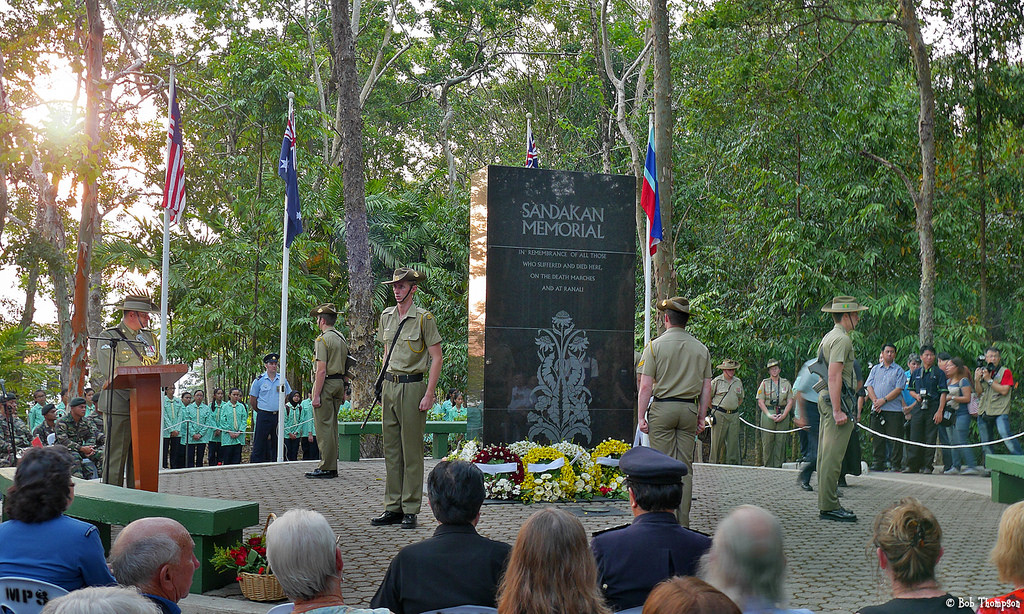
As for why the memorials are held in Sandakan, it’s because the death marches happened there during the Japanese occupation, sometime in the 1940s. The memorials are held there to remember the atrocities suffered by some 1,900 Australian and British Prisoners of War (POWs) at the hand of their Japanese captors.
The tale of the destroyed airport and the people who built it
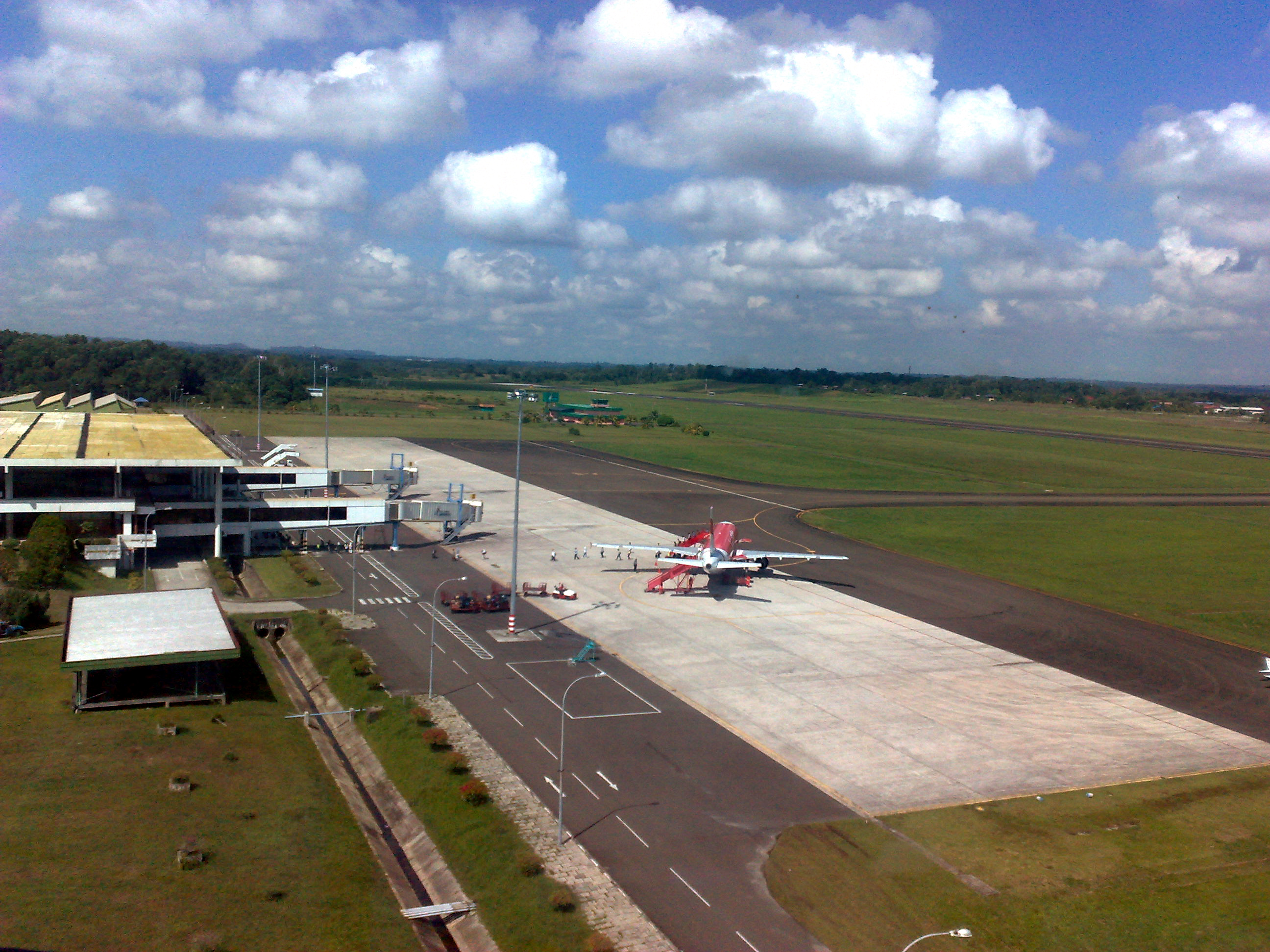
While some Sabahans may remember the story from tales told by their grandfathers, most don’t know about it as the Sandakan Death Marches were not a part of our History curriculum.
It began during the second World War, when the Japanese were suffering from lack of resources to wage war against their enemies at the time. They saw Borneo (present-day Sabah) as a strategic place to get oil, so they made their way across the poorly guarded Peninsular Malaya at that time. Efforts by the British and Australian forces to stop their advances are futile, and in a short time Japan had conquered Malaya and Borneo.
The remaining British and Australian forces who did not manage to escape were taken as prisoners of war (POWs) by the Japanese forces and were all brought to Sandakan to build an aerodrome, which is just a fancy word for airport. In the beginning conditions were tolerable, but some time later the Kempeitai (which are like the KGB, but Japanese) discovered that some POWs had been relaying radio messages and are in league with a local resistance organization. Arrests and punishments were made, and life for the 1,900 remaining POWs became worse due to tightened discipline and diminishing rations. The already hungry POWs were practically slowly starved while forced to build an airport.
The war progresses, and the Allied forces managed to blow the airstrip built by the POWs to smithereens. Seeing no more need to continue construction, at the end of January 1945 the Japanese decided to move 455 of the fittest, strongest prisoners to Jesselton (present day Kota Kinabalu) to become laborers, a distance of about 192 kilometers through marshes, jungle and steep inclines at the bottom of Mount Kinabalu, which became known as the first death march.
The task of creating this track was given to a local headman. As the locals were understandably not very fond of the Japanese, the headman tasked with clearing the path purposely picked the most difficult and inconvenient path possible, away from any villages, crossing a few rivers, and through steep inclines and muddy marshes, all in the hopes of making it harder for the Japanese. They are, however, unaware that the track was to be used by the POWs.
The POWs who were too weak to keep walking or attempted to escape were killed off by the Japanese, their bodies left in the jungle, dragged a few feet off the track. While the original intention was to get to KK, even the Japanese officers found that the track was too challenging, what with the prisoners dropping dead from exhaustion and less people to carry stuff for them and all. So the POWs are forced to stop at Ranau and set up camp there.

Considering that the POWs aren’t very fresh to start with; starved, weakened and injured from physical beatings and diseases, on top of carrying rations and equipment for the Japanese; it’s amazing that 190 of them survived the track.
A few months after that, in May 1945 the Japanese decided that more POWs should be sent to Ranau. This is when the Second March happened. However, the conditions of the POWs remaining in Sandakan was even worse than in January, as food and medicine were purposely withheld in order to keep the POWs in a weakened state. Of these disease-ridden and starving POWs, 536 were selected to march to the Ranau camp, but this time it’s a bit different.
Since in the first march POWs had attempted to escape during the long trek, participants of the second march were ordered to walk in groups of about 50, with Japanese guards on the front, sides and back of the group. Anybody who fell down, too weak to continue or attempted escape were killed by either a quick gunshot or by bludgeoning to death with rifle butts.

Off the 536 prisoners in the second march, only 183 of them reached Ranau, where they discovered that only six of the POWs from the first death march were still alive after four months of leaving Sandakan. The rest perished either due to terrible living conditions, forced to carry heavy sacks of rice from Panginatan and back or were murdered.
And what of the remaining 250 or so POWs at Sandakan, who were too ill to join the second march? At first, the Japanese thought of just letting them die of starvation. However, the war is coming to an end and the Japanese knew that if any of them survived to tell their tales, there’ll be trials and stuff. So they selected 75 people who could walk to go on a final march to Ranau, and executed the rest. But the conditions of the POWs are so bad at this point that none of them made it past 30 kilometers. All of them were killed and left in the jungle.

Of the 1,900 POWs held at Sandakan, only 6 survived
By the time the Japanese surrendered on the 15th of August, 1945, from the 1,900 prisoners of war held at Sandakan, only 6 Australians survived by successfully escaping at various points during the ordeal, although their stories weren’t pretty.
The first group to escape was Gunner Owen Campbell‘s group, on the 7th of June. They were walking through the jungle when they were hit by a strafe by Allied aircrafts, who believed that the POWs were all retreating Japanese. In the chaos that followed, Campbell and a few other prisoners managed to steal some provisions and ran into the jungle.
They split into two groups: Campbell escaped with a Private Skinner, while a Corporal Emmett went another way with Signalman Webber and Private Austin. However, a few days on the run, the already weakened Skinner was hit with dysentery, and was forced to rest. Skinner, thinking that he was a burden to Campbell, pleads for Campbell to leave him, but Campbell didn’t, and one day Campbell returned from foraging for food to find that Private Skinner had slit his own throat with the tin lid of a stolen food can.

Campbell then wandered down the river and caught up with Corporal Emmett’s group, and found that Private Austin was stricken with malaria and dysentery and unable to move. They saw what they thought was a local fishing boat going down the river, and Emmett and Webber hailed the boat for help. However, it turned out to be a Japanese patrol boat. Emmett and Webber were swiftly gunned down, and Campbell was left with Austin, who died a few days later.
Campbell then wandered alone in the jungle, surviving on fish, fungus and crabs, plagued by hallucinations and malaria until finally, on the 3rd of July, he was found by some people from a nearby village. Campbell was then sheltered there until he was taken to an SRD camp by the villagers, and was later rescued and taken aboard the USS Pocomake.
Bombardier Braithwaite escaped in the same incident as Campbell, however he took a different route, alone. He was found by the villagers of Kampung Sapi, and was taken by a sampan to Pulau Liburan, where he was rescued and evacuated to the Philippines.
“I suggested they give me food and I would make my way, but they told me I wouldn’t make it, so they would take me by boat at night. I asked them what they would do if they met the Japs on the river, and their reply was that they would fight.” – Bombardier Braithwaite, for borneopow.info.
Lance Bombardier Moxham and Private Botterill, who survived the first march, escaped from Ranau together with Privates Short and Anderson from the second march on the night of the 7th of July. They were found by local villagers, who hid them and kept them safe for forty days until they were transferred to a nearby SRD branch on the 16th of August. Except for Private Anderson, who died on the 29th of July, they were all flown out after the war ended. However, the horrors of war stayed with them, even after the rescue.
“No effort whatsoever was made to bury the men. They would just pull them five to fifteen yards off the track and bayonet them or shoot them, depending on the condition of the men. If they were conscious, and it was what we thought was a good, kind guard, they’d shoot them. There was nothing we could do.” – Keith Botteril, in Laden, Fevered and Starved.
The last survivor escaped on the 28th July, very near to the end of the war. Warrant Officer Sticpewich was tipped off by a friendly Japanese guard that if they didn’t get out by night, all of them will be killed. He spread the word, however only one Private Reither would escape with him. They snuck out of camp on the night of the 28th of July, and got as deep into the forest as possible. Villagers found them and kept them safe, but Reither’s dysentery got the best of him and he died on the 8th of August, just one day before the rescue team came.
The ones who didn’t survive endured horrible fates
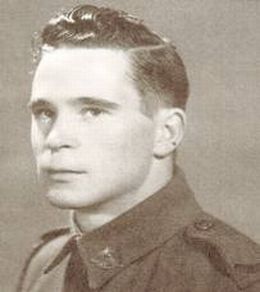
While most who tried to escape were executed, some weren’t that lucky. Gunner Albert Neil Cleary was one of them. He was one of the survivors of the first death march to Ranau, but while there he escaped with a fellow gunner, Wally Crease. Cleary was recaptured and beaten before being brought back to the Ranau camp, and a hideous string of tortures awaited him.
He was forced to kneel with a log behind his knees while the Japanese soldiers landed blow after blow upon him using fists and rifle butts. Every half hour or so, he was forced to stand, causing extreme pain when blood flowed back into his legs. Sometimes the Japanese will jump onto the log behind his knees, causing further pain. All the while they shouted to the other prisoners that if they tried to escape, the same thing will happen to them.
Wally Crease was recaptured the next day, and the same treatment was given to him by their captors. This time, the beating continued deep into the night. Somehow, Crease managed to escape again the next morning after that, but he was shot on sight. The torture continued for Cleary, and he was later tied to a tree by his neck. Covered by blood blisters and caked blood, his condition was made worse by the dysentery he was suffering from, and he was forced to lie in his own excrement.
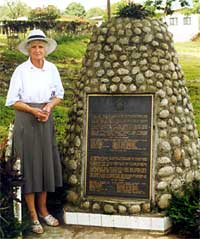
Cleary’s ordeal lasted a little more than two weeks, where he was continuously beaten with fists and rifles. This went on until his captors saw that he was about to die, whereupon they permitted his friends to take him away. He was cleaned and taken away into one of the POW’s huts to die. Today, a memorial called the Cleary Memorial stands in Ranau to remember his atrocious death.
While Cleary’s story was vivid since it was witnessed by the surviving Private Botterill, many other POWs received a similar fate during their capture. The march itself was torture enough, with the prisoners wearing just pieces of rags, trudging barefoot across the rugged terrain of Sabah’s jungles while being half-starved and made to carry heavy loads. Their fates while at the camps aren’t any better.
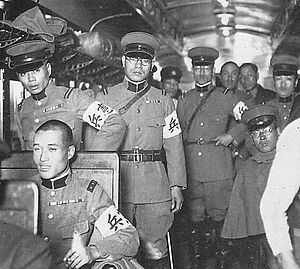
The POWs came to fear both the Kempeitai and the Bashers during the construction of the aerodrome. The Kempeitai was sort of like a secret police of the Japanese, and they were well known for their torture methods. Offences that warranted torture include stuff like having food that are not part of your rations, smuggling medicine, making makeshift weapons and radios, and wiping the sweat off your face after being released from the cage, which is one of the tortures.
The cage torture consists of putting a POW into a small, cramped open cage and leaving the POW under the hot sun for days on end, without food. The only time they were taken out during this torture was for their daily exercise, which consisted of more beatings. Other methods of torture by the Kempeitai include pushing metal pins under the nails of the prisoners, forcing prisoners to drink water until they are bloated, then stamping on their distended stomachs, and burning the prisoners’ flesh with cigarettes and open flames.

The bashers, on the other hand, were older Japanese soldiers brought in to increase the productivity of the prisoner-workers. They would walk among the emaciated and starving prisoners, carrying sticks and bamboos. Not working fast enough, being tired, failing to bow satisfactorily to them or basically existing will be cause enough to be beaten up. And it was not a gentle tap on the wrist, either. The bashers usually leave a prisoner with broken arms and legs, and rarely stop before the prisoner faints.
So now you know the story behind the Sandakan memorials…

The Sandakan Death Marches is the greatest atrocity ever committed to the Australian forces, according to various sites mentioning the event. However, words can’t even begin to paint a picture of the helplessness and suffering endured by the captured POWs at Sandakan. Even though Japan is a signatory of the 1929 Geneva Convention that puts forth the humane treatment of prisoners of war, they did not ratify the convention.
The war crimes committed by Japan during the Second World War are not only done towards the Australians, but many others as well. It was estimated that 16% of Sabah’s total population were killed during the Japanese occupation, and that doesn’t include the loss in other states as well. Therefore, it would serve us well to remember the horrors of war so that we do not repeat the same mistakes that our forefathers did.
There are many ways for us to remember these historical events. While Anzac Day is commemorated in April, there is another separate Memorial Day commemorated in Sandakan in August, on the 15th, in case you missed the first one. You can also follow a tour where you can recreate the POWs’ experience on the march.
- 38.2KShares
- Facebook37.4K
- Twitter60
- LinkedIn103
- Email178
- WhatsApp426


